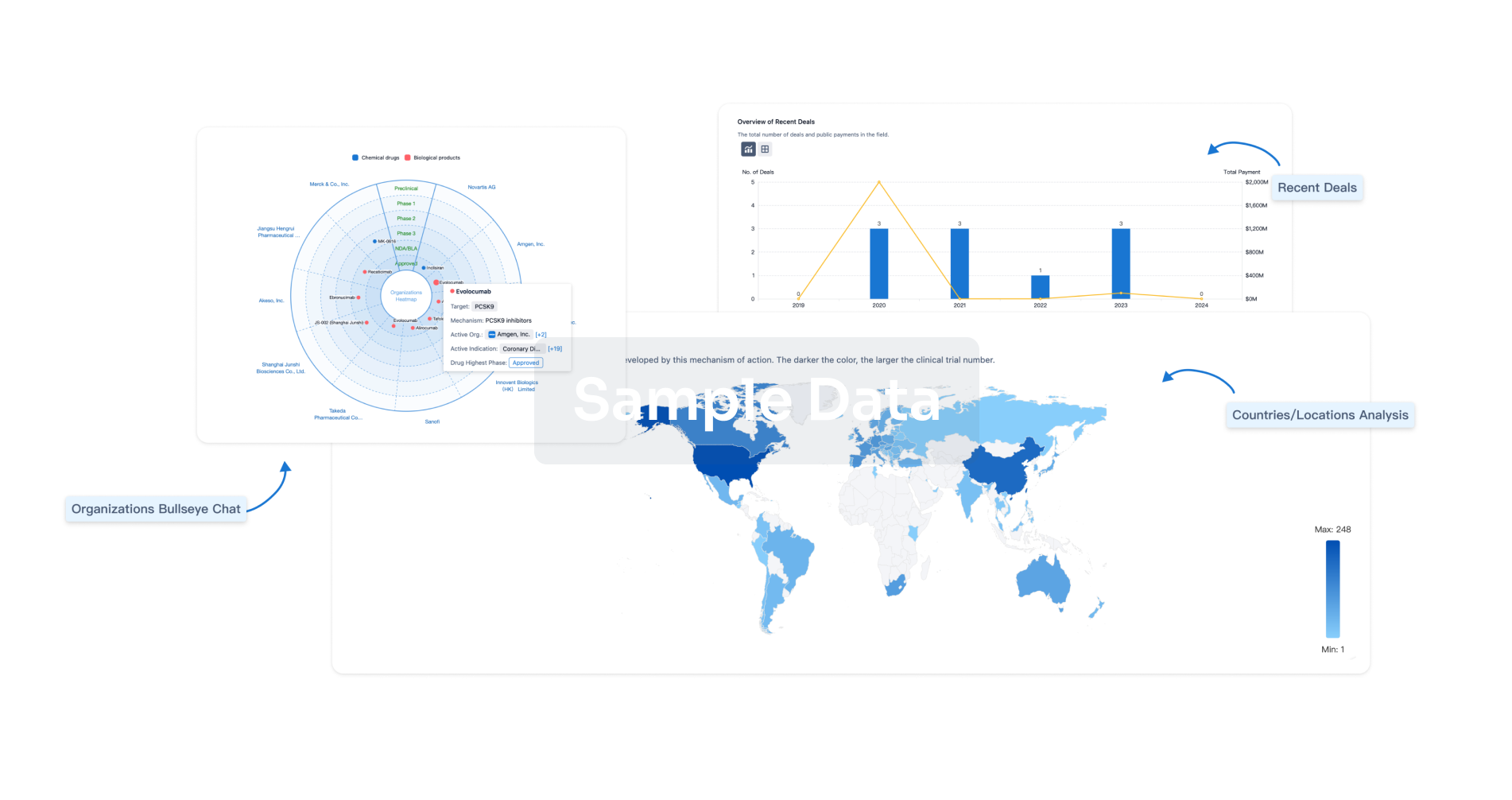Request Demo
Last update 08 May 2025
DAT x PDGFRs
Last update 08 May 2025
Related
1
Drugs associated with DAT x PDGFRsTarget |
Mechanism DAT agonists [+1] |
Active Org.- |
Originator Org. |
Active Indication- |
Inactive Indication |
Drug Highest PhasePending |
First Approval Ctry. / Loc.- |
First Approval Date20 Jan 1800 |
5
Clinical Trials associated with DAT x PDGFRsNCT04964466
Growth Factor Availability and Release Kinetics in PRF Versus GEM21S with and Without Bone Substitutes: an in Vitro Analysis
This study is seeking to evaluate that platelet-derived growth factor-BB (PDGF-BB) is a proven wound healing and osteogenic protein that plays a critical role in wound healing and previous research has demonstrated a non-linear response where higher dosages produced less effect. As Platelet Rich Fibrin (PRF) contains numerous platelets, it contains PDGF-BB, but at levels lower than in the commercially available product and with inter-individual variation, GEM21S. To achieve both ideal handling and achieve ideal levels of PDGF-BB, there is a rationale to add GEM 21S recombinant human platelet-derived growth factor-BB (rhPDGF) to a bone graft prior to making "sticky bone".
Start Date31 Aug 2021 |
Sponsor / Collaborator |
NCT01829867
A Phase I, Open-label Study in Patients With Parkinson's Disease to Further Assess Safety and Tolerability of sNN0031 Administered at the Total Dose of 95 μg by Intracerebroventricular Infusion
The purpose of this study is to assess the safety and tolerability of a dose of 95μg sNN0031 after intracerebroventricular administration to patients with Parkinson's disease
Start Date01 Apr 2013 |
Sponsor / Collaborator |
100 Clinical Results associated with DAT x PDGFRs
Login to view more data
100 Translational Medicine associated with DAT x PDGFRs
Login to view more data
0 Patents (Medical) associated with DAT x PDGFRs
Login to view more data
6
Literatures (Medical) associated with DAT x PDGFRs01 May 2021·Life SciencesQ3 · MEDICINE
Understanding stem cells and its pivotal role in regenerative medicine
Q3 · MEDICINE
Review
Author: Saha, Sanjukta ; Maji, Avik ; Maity, Tapan Kumar ; Paul, Abhik ; Sarkar, Arnab ; Roy, Puspita
01 Aug 2014·Brain, Behavior, and ImmunityQ1 · MEDICINE
HIV-1 Nef expression in microglia disrupts dopaminergic and immune functions with associated mania-like behaviors
Q1 · MEDICINE
Article
Author: Baker, Glen B ; Power, Christopher ; Dickie, Peter ; Maingat, Ferdinand ; Acharjee, Shaona ; Vivithanaporn, Pornpun ; Paul, Amber M ; Branton, William G
01 Jan 2004·Neural Plasticity
Effects of Neonatal Treatment With 6‐Hydroxydopamine and Endocrine Disruptors on Motor Activity and Gene Expression in Rats
Article
Author: Masuo, Yoshinori ; Oka, Syuichi ; Ishido, Masami ; Morita, Masatoshi
Analysis
Perform a panoramic analysis of this field.
login
or

AI Agents Built for Biopharma Breakthroughs
Accelerate discovery. Empower decisions. Transform outcomes.
Get started for free today!
Accelerate Strategic R&D decision making with Synapse, PatSnap’s AI-powered Connected Innovation Intelligence Platform Built for Life Sciences Professionals.
Start your data trial now!
Synapse data is also accessible to external entities via APIs or data packages. Empower better decisions with the latest in pharmaceutical intelligence.
Bio
Bio Sequences Search & Analysis
Sign up for free
Chemical
Chemical Structures Search & Analysis
Sign up for free

